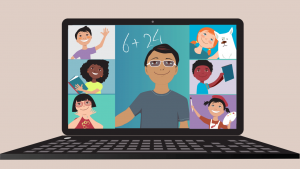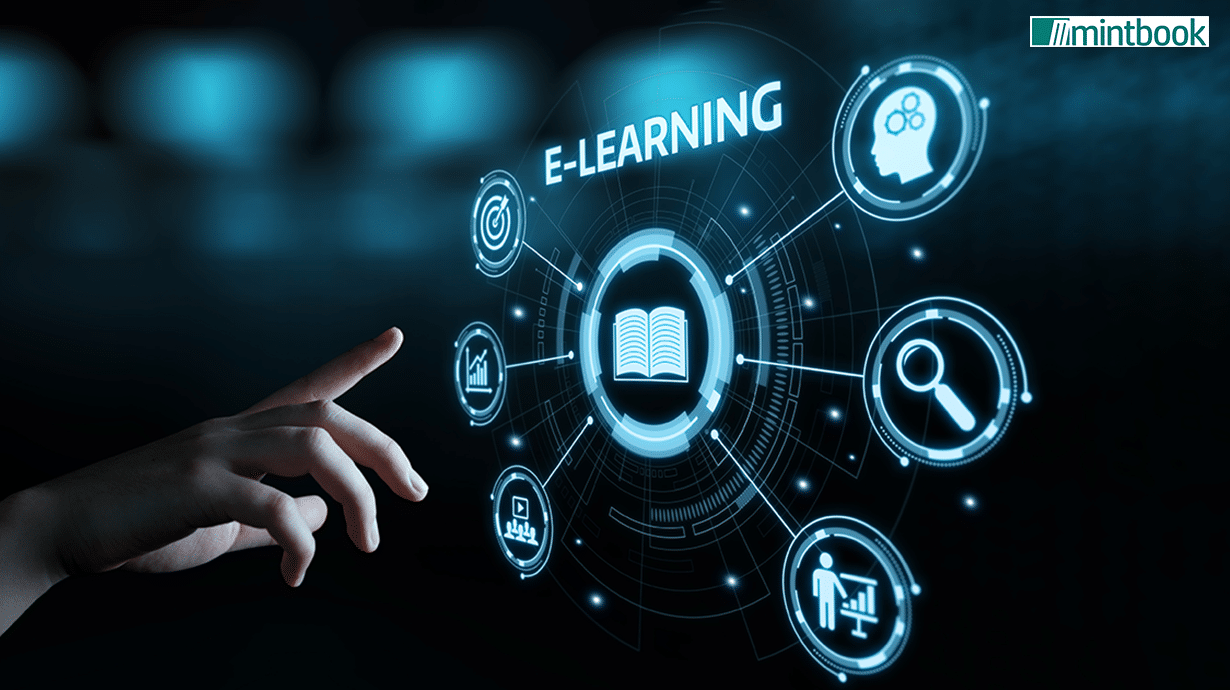The Duty of E-Learning in Forming the Future of Education for Children
As typical education systems advance, the combination of e-learning is becoming a critical pressure in shaping the future of education for youngsters. Through interactive platforms, individualized learning courses, and enhanced access, e-learning addresses diverse educational requirements while fostering important thinking skills. This electronic makeover not only bridges geographical separates but also makes sure fair access to high quality education, establishing the stage for a more comprehensive understanding environment. Nevertheless, recognizing the full degree of this influence calls for analyzing the diverse effects of e-learning's role in contemporary education and learning systems.
Interactive Knowing Settings
In the world of e-learning for kids, interactive understanding environments have actually become essential tools in improving instructional results. Education and study for children and kids. These digital platforms incorporate multimedia components such as video clips, computer animations, and gamified exercises to create a vibrant and appealing academic experience. Significantly, they change easy discovering right into an energetic process, thus promoting much better retention and understanding

The combination of collaborative tools also enables peer-to-peer communication, which is critical for developing social skills and team effort abilities. Virtual classrooms and discussion forums allow pupils to share concepts, ask questions, and work together on tasks, reproducing the benefits of conventional class interactions. For that reason, interactive learning environments are not just auxiliary educational tools however essential components that enhance the discovering environment for youngsters (Education and study for children and kids). Their role fit a more interesting and reliable educational landscape can not be overstated.
Personalized Education And Learning Courses
Using the possibility of tailored education and learning paths revolutionizes the finding out experience for youngsters by dealing with their special requirements and capabilities. Conventional one-size-fits-all techniques typically fail to address private knowing voids and strengths. E-learning systems, however, can utilize advanced formulas and information analytics to tailor academic material, speed, and approaches to every kid's details needs. This customization promotes an extra efficient and engaging knowing setting, allowing pupils to grow at their very own rate.
Customized education and learning courses also empower teachers by supplying detailed insights right into pupil progression. Educators can identify areas where a kid may intervene and have a hard time with targeted assistance. Alternatively, students mastering specific subjects can advance without being kept back by a standardized curriculum. This adaptability not only improves scholastic efficiency but also boosts trainee confidence and inspiration.
In addition, e-learning systems can incorporate varied discovering resources, such as interactive simulations, multimedia content, and gamified lessons, to align with different discovering designs. By fitting visual, auditory, and kinesthetic learners, individualized education and learning courses guarantee that each child obtains one of the most efficient instructional approaches. Education and study for children and kids. Hence, leveraging personalized education and learning paths through e-learning contributes in developing a future-proof, comprehensive, and effective educational landscape for children
Enhancing Accessibility
While the advantages of customized education and learning courses are considerable, enhancing access is similarly critical to make certain that e-learning platforms can reach all youngsters, irrespective of their socio-economic background or geographical place. Digital inclusion is vital to connect the educational divide and give equitable learning chances. This can be achieved with the development of low-cost, top quality e-learning solutions that come on diverse gadgets, including smartphones, computer systems, and tablets.
Additionally, partnerships in between governments, non-profits, and personal sectors can promote the circulation of essential get more technology and web accessibility to underserved communities. Such cooperations can also support the development of localized content in numerous languages, ensuring cultural importance and comprehension.
In addition, adaptive knowing innovations can be customized to suit youngsters with disabilities, providing features like text-to-speech, adjustable text sizes, and interactive aspects that satisfy different discovering requirements. These technologies not just equalize education and learning yet additionally encourage students by giving devices that provide to individual difficulties.
Establishing Vital Skills
With ease of access enhancements in position, the next crucial aspect to address is the advancement of vital skills among young students. E-learning systems provide a distinct opportunity to grow a variety of essential abilities that traditional class setups may struggle to address adequately. Amongst these are vital thinking, analytic, and electronic literacy, which are increasingly indispensable in the modern-day globe.

Additionally, e-learning platforms commonly incorporate joint tools like conversation forums, team projects, and peer testimonials, which cultivate communication and synergy skills. These systems also expose pupils to a substantial array of electronic tools and sources, improving their electronic literacy. As trainees browse various software program, applications, and on the internet sources, they come to be proficient at using modern technology efficiently and properly.
Fundamentally, e-learning not just supplements typical education however likewise outfits students with the vital abilities essential to flourish in a significantly electronic and interconnected world.
Overcoming Geographical Barriers
The development of e-learning has actually dramatically minimized the geographical barriers that commonly prevented accessibility to quality education. Prior to the digital change, students in underprivileged or remote locations typically dealt with restricted academic resources and possibilities. E-learning platforms currently bridge this gap, offering universal access to top quality educational web content despite place.
With on the internet classes, virtual libraries, and interactive devices, trainees from diverse geographical backgrounds can engage with the very same curriculum provided in urbane institutions. This democratization of education a fantastic read ensures that every child, regardless of their physical area, has the prospective to achieve academic success. In addition, e-learning promotes accessibility to specialized topics and experienced trainers that may not be available in your area.
Additionally, e-learning makes it possible for real-time partnership between students and teachers from various parts of the globe, promoting a global discovering neighborhood. This interconnectedness not just enhances students' academic experiences but additionally prepares them for a more globalized labor force. By getting rid of geographical restraints, e-learning is critical in developing an inclusive instructional atmosphere where every youngster has the chance to grow. As a result, the role of e-learning extends beyond plain benefit; it is a transformative device that redefines accessibility in education and learning.
Conclusion
E-learning is critical fit the future of education and learning for youngsters by creating interactive and customized reference learning environments. It improves availability, promotes essential skill development, and gets rid of geographical obstacles, making certain all pupils access to top notch instructional sources. This electronic makeover equips learners with the devices required for scholastic and professional success, promoting inclusivity and partnership on a worldwide range. E-learning, as a result, stands as a keystone in the advancement of modern-day education and learning.
As standard education and learning systems develop, the integration of e-learning is emerging as a crucial pressure in shaping the future of education and learning for youngsters. Therefore, leveraging customized education and learning courses through e-learning is instrumental in producing a future-proof, comprehensive, and reliable academic landscape for children.
While the benefits of individualized education and learning paths are considerable, improving availability is similarly important to guarantee that e-learning platforms can reach all children, regardless of their socio-economic history or geographic place. The function of e-learning extends beyond mere ease; it is a transformative device that redefines availability in education and learning.
E-learning is essential in shaping the future of education for children by creating personalized and interactive learning settings.